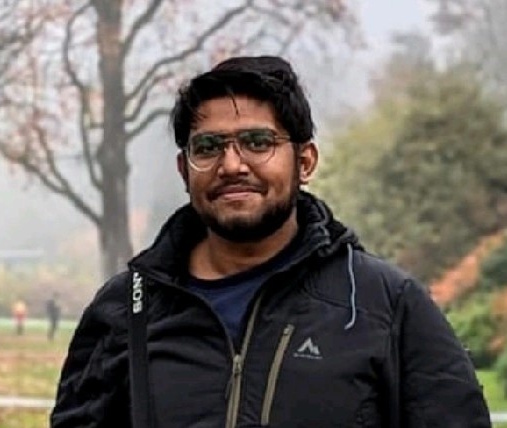Shovon S. Saha, MASc
Shovon S. Saha, MASc is a Mechatronics Engineer at Sonic Incytes and Embedded Design Advisor at the University of Toronto Robotics Association (UTRA) with over 5 years of experience in embedded systems development and biomedical engineering.
He is an MIT Solve 2020 winner and Bill & Melinda Gates Foundation Award recipient who specializes in developing complex medical devices and robotic systems at low cost without sacrificing functionality. Shovon is a full-stack embedded systems developer who turns product ideas into reality with advanced mechanical and mechatronics engineering expertise.
With a drive of developing technology to impact people’s lives, he specializes in developing complex products at low cost without sacrificing their functionalities. His works are in conjunction with robotics and biomedical engineering, effectively contributing to leading research publications internationally.
At Sonic Incytes since September 2024, Shovon has worked as a Mechatronics Engineer developing innovative medical diagnostic solutions. The company’s flagship product, Velacur™, equips physicians with an advanced liver imaging tool to help manage the growing epidemic of fatty liver disease, offering real-time, AI-guided quantification of liver stiffness and attenuation. In his role, Shovon focuses on product development, project management, embedded systems, firmware development, and electronics hardware design in the company’s Vancouver office.
Shovon’s most significant achievement came as Design Team Lead and Product Developer at Bioforge Health from 2021 to 2022, where he led a 15-member cross-functional team to advance four medical devices to randomized clinical trials (RCTs). His groundbreaking work on the Bioforge Neonatal Incubator earned him the prestigious MIT Solve 2020 award, along with the Bill & Melinda Gates Foundation Award and Solve Community Award.
He contributed to the patent-pending Bioforge OxySaver, a breakthrough in respiratory support technology, and designed an IoT-enabled vital signs monitor using an ESP32 microcontroller with FreeRTOS for real-time data acquisition. His work included partnering with Nonfiction Design, MIT Solve Community, and the Bill & Melinda Gates Foundation to ensure global impact.
During his time at Bioforge, Shovon expertly navigated IEC standards (IEC 60601–1, IEC 60601-2-50, IEC 60601-2-19) in the Neonatal Incubator and photo-therapy lights design, ensuring global market readiness. He engineered over 10 compact modular PCB designs and created efficient SOPs in PCB assembly, achieving a 30% reduction in both device size and cost of production.
Shovon also led the humanitarian portfolio, deploying an IoT-enabled handwashing station, 5000 umbilical cord clamps, and 50 foot-operated taps in Rohingya refugee camps in Bangladesh, collaborating with Field Ready and BRAC, the world’s largest NGO.
From November 2023 to August 2024, Shovon worked as a Mechatronics Engineer at Nuvio in Waterloo, where he developed embedded systems incorporating Design for Manufacturing (DFM) principles. He created advanced sensor fusion algorithms in C++ on the ESP32-S3 microcontroller, utilizing its Xtensa® dual-core 32-bit LX7 architecture to integrate mmWave, IMU, force, and hall sensors for precise biomechanic metrics measurement. His optimization of system performance included allocating interrupt handlers in the Instruction RAM (IRAM) for enhanced execution speed and reliability in real-time sensor data processing.
Shovon has published several research papers, including Bioforge PTL: An IoT Enabled Rapidly Deployable Phototherapy Device for Neonatal Jaundice and coauthored OxySaver: Highly Conserving Demand Oxygen Delivery System with Increased Throughput in the Journal of Measurement Science and Technology (2024) and Cost-effective and power-efficient portable turbine-based emergency ventilator in HardwareX.
Shovon earned his Master of Applied Science (MASc) in Mechanical and Mechatronics Engineering from the University of Waterloo in August 2024 with a grade of 88.25. His thesis titled Developing a LIDAR-based plane/stair detection algorithm using C++ within a ROS environment on NVIDIA Jetson Nano platforms utilized the platform’s Quad-core ARM A57 processor to enhance real-time performance for assistive devices like walkers and exoskeletons.
He is researching in the Neural and Rehabilitation Engineering (NRE) Lab of Dr. James Tung, where the mission is to develop and apply novel methods to measure human motor control in real-world conditions and assistive technologies to facilitate mobility and optimize motor rehabilitation.
He earned his Bachelor of Science in Electrical and Electronics Engineering from North South University in Bangladesh in 2020 with a specialization in Robotics and a grade of 85.
Throughout his career, Shovon has held various advisory and engineering positions. As an Embedded Design Advisor at the University of Toronto Robotics Association since August 2023, he troubleshoots and optimizes ROS-based embedded systems for autonomous rover projects and collaborates with cross-functional teams.
He also worked as a Wearables Engineer at MEGA InTech from January to August 2024, where he collaborated with the Massachusetts Institute of Technology team in developing ImpactSense sensors and engineered machine-learning algorithms for activity recognition models. His earlier experience includes roles at Myant Inc. as Wearables R&D Engineer, WATonomous as Mechanical Engineer, and Wizkit as Senior Researcher in Product Research and Development.
During the Covid-19 pandemic, he brought an impact on thousands of lives in Bangladesh through his products in biomedical devices.
Previously, he also worked as a robotics trainer and product developer at reputed organizations such as American Center U.S. Embassy Annex, Adama Robotics, and AIROS.
Shovon has been recognized with several honors and serves as an advisor to various student organizations. He is currently based in Vancouver, British Columbia, Canada, where he continues his work at the intersection of robotics, biomedical engineering, and embedded systems development. Shovon aspires to work in the Autonomous Vehicles industry to be able to contribute to the development of systems that will make roads safer ultimately working towards Level 5 autonomy someday.
Read Exoskeleton Rehabilitation Biomechanics.
Visit his LinkedIn profile, ResearchGate profile, Google Scholar page, and ORCID profile. Follow him on Facebook and Instagram.
